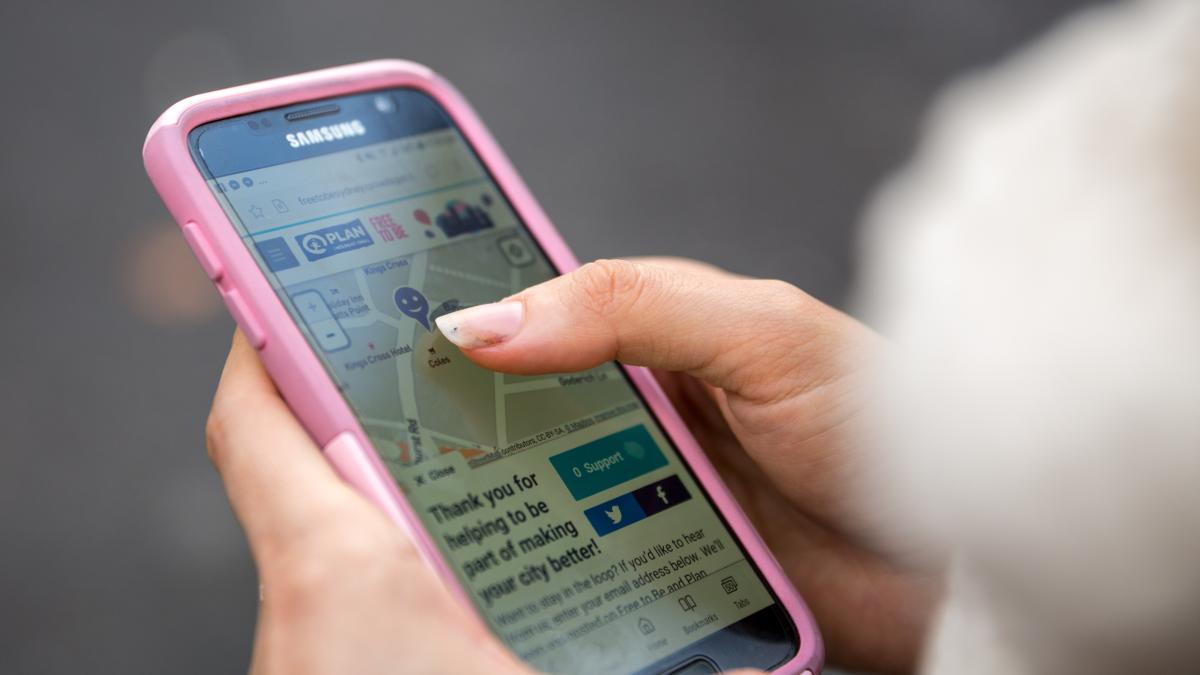
Walking alone at night, as a woman, can be pretty dicey.
Speaking purely from my personal experience as a woman living in the inner-city in Australia, I don’t have enough fingers and toes to count the amount of times I’ve felt unsafe walking around in the daytime, let alone after dark.
Whether it’s catcalling, bad vibe stares or feeling as though you’re being followed, the experience of feeling vulnerable as a female in public is not a unique one.
We all have the stories, we all know the feeling; and thankfully, one ‘Strayan organisation is working to diminish this reality.
Plan International Australia has today launched an interactive map of Sydney for girls and young women to collect data on street harassment and public safety.
Created in partnership with CrowdSpot and Monash University, the Free to Be map allows young women and girls to drop a ‘good’ pin on the locations in the city that they like and a ‘bad’ pin on the areas where they feel uncomfortable or unsafe. They can then provide anonymous detail about that area or record a particular incident that occurred there.
https://www.youtube.com/watch?v=fNuZs0uoP2s&feature=youtu.be
The initiative comes off the back of some pretty startling research.
90% of young women aged 18-25 that PIA surveyed said they felt unsafe on the streets of Sydney at night and a further 92% felt uncomfortable taking public transport alone after dark.
Of those, one in three (35%) said they always felt unsafe on public transport at night.
Sydney is one of five locations worldwide where the Free to Be map launches today, along with Delhi, Kampala, Lima and Madrid. It’s believed to be the most ambitious crowdsourced data collection project to combat street harassment ever undertaken.
Plan International Australia’s CEO Susanne Legena said the aim of the map was to harness user-generated data to provide a clear picture of the reality for girls and women living in cities.
“There’s an assumption that Australian cities are safe and welcoming for girls and women. When you have 90% of young women in Sydney telling us the city is unsafe for them at night and many of those opting out of going out altogether, it is clear this is certainly not the case,” Ms Legena said.
Legena said when they launched the pilot city safety map in Melbourne back in 2016, thousands of young women shared ‘extremely concerning’ experiences of harassment.
“What surprised us about the Melbourne map was the scale and severity of incidents described by young women and just how common those were, whether it’s stalking, intimidation, being cat-called and even serious assaults. We expect we’ll see a similar result in Sydney. This should be a light bulb moment for anyone with a stake in city planning and safety that we need to make big changes to make our cities welcoming spaces for everyone, not just for some.
“We want to bring the issue into the light and send a message that, actually, it’s not okay, it should never be just tolerated as a part of the normal day to day female experience, and something has to be done to shift the culture that allows this behavior to thrive.
Legena added that the data will be provided to city planners, public transport authorities, police and groups responsible for urban safety, so they can make positive changes to make cities safer places for women.
Girls and young women in Sydney are encouraged to take part in this groundbreaking research project here.
The Sydney Free to Be map will remain open for entries until May 28. The data will be collected and analysed by researchers from Monash University’s XYX Lab, which will provide insight into the best and worst areas of the city, what makes a city safe or dangerous for girls.



